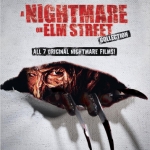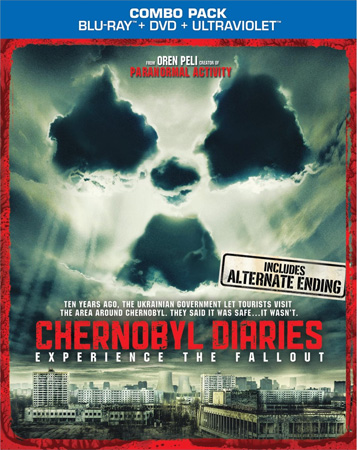
Certain writers and directors embrace such specific styles and subjects that they inspire a level of expectation whenever they have something new releasing. For Oren Peli, the man behind Paranormal Activity and ABC’s The River, that expectation is that everything he makes will be in the creepy found footage style. Peli’s 2012 radioactive horror film, Chernobyl Diaries, released on Blu-ray this month and delivers some good frights but somehow mismanages those expectations.
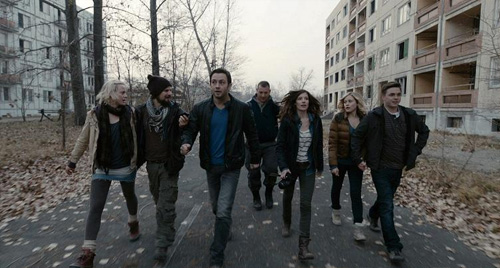
One truth that Chernobyl Diaries maintains is that you never would want to be any Oren Peli character ever. The hapless band of lambs he leads to the slaughter this time is led by voice actor and singer Jesse McCartney, who plays Chris, an American on vacation in Europe with his girlfriend Natalie (Olivia Dudley) and her friend Amanda (Devin Kelley). They are on their way to Russia, where they will meet up with Chris’s brother Paul (Jonathan Sadowski), who has been living in Kiev and who will accompany them to Moscow for some big happy Russian party times. Before going to Moscow, Paul reveals to the trio that he has arranged for them to go on an extreme tourism excursion to the ghost town of Prypiat, where the workers at the Chernobyl power plant lived with their families before the reactor meltdown rendered the area unlivable in 1986. He’s even hired Uri (Dimitri Diatchenko), a former Russian special ops soldier, to lead their excursion into the Exclusion Zone surrounding the reactor.
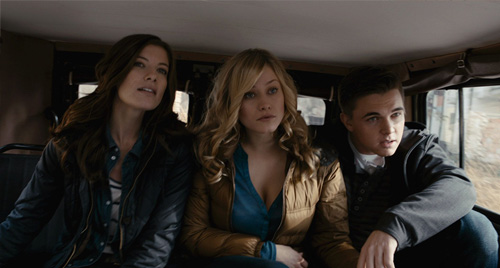
Accompanying the foursome and Uri are Zoe (Ingrid Bolso Berdal) and Michael (Nathan Phillips), a Norwegian / Australian couple on a backpacking trip. Everyone is game for the outing except Chris, who thinks the whole thing is a bad idea. They really should have listened to Chris. Of course, had they listened to him and gone to party it up in Moscow, we’d have missed out on the unfortunate car trouble that strands the group overnight in the middle of Prypiat. It’s right around the time their car stops working that the travelers get the notion that they aren’t alone out in this area of Ukrainian desolation. As soon as things start looking dangerous, the characters start making the requisite bad decisions that populate this kind of movie. The first half of the film actually delivers some tense moments and genuinely good jump scares. The element of the unknown informs a lot of that creep factor. Once the threat becomes more apparent and people start running and screaming, as they are wont to do in horror movies, the scariness just unravels. Yes, the characters are in a horrible situation, but no single character is sufficiently developed enough to warrant a lot of investment. As the plot develops, the story seems like it’s leading to a predictable conclusion before it abruptly stops without any real payoff.
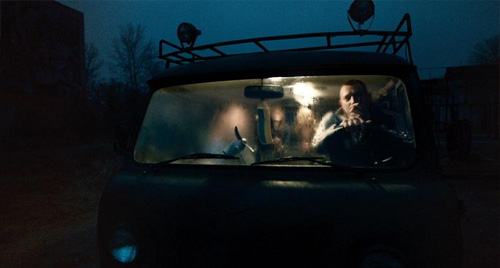
I first became aware of Chernobyl Diaries when I saw a trailer in the theater in early 2012. It seemed to hit all the boxes on the Peli checklist, from yammering protagonists who likely would make poor decisions before seeing their own entrails to the typical shaky-cam first person viewpoint. The assumption that Chernobyl Diaries would be another found footage horror movie is a fair one to make, given Peli’s track record and that trailer. It even has “diaries” in the title, even though no character in the movie actually keeps a diary or makes an effort to journalize anything that’s happening. Indeed, the movie opens with a trio of American friends gallivanting across Europe and shooting video from a handheld. After the first few minutes, however, there’s a fast shift from the lower quality handheld camera to a high definition video camera. The cinematography continues bobbing and weaving, though, making it seem that we still are in the found footage school of horror and that some character is acting as our eyes and viewpoint. As it turns out, the movie just drops the found footage framing at this point and shifts to a standard third person shooting style without any transition or preamble. It’s pretty jarring, like a novel that changes from first person to third person narrative between paragraphs. The first person style does lend a feeling of immediacy to the action, but a lot of that is lost due to the disorienting way in which it’s introduced.
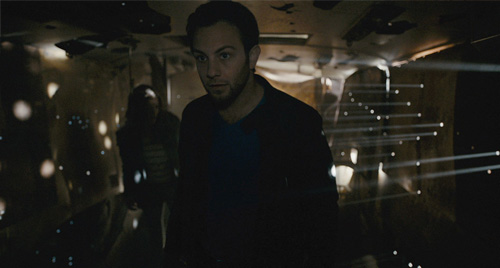
The Blu-ray release includes a couple of deleted scenes, one of which is an alternate ending. I had hopes that the new ending would be something that could redeem the way the original movie ends. Unfortunately it just removes a couple of minutes from the theatrical movie’s conclusion and tacks on a new sequence that lasts less than a minute and ends everything in basically the same way the original one did. The special features also include a mock infomercial for Uri’s Extreme Tours, as well as a Chernobyl conspiracy viral video. It’s pretty lean pickings, and there isn’t an audio commentary to attempt a justification for some of the moviemaking decisions involved in this production.
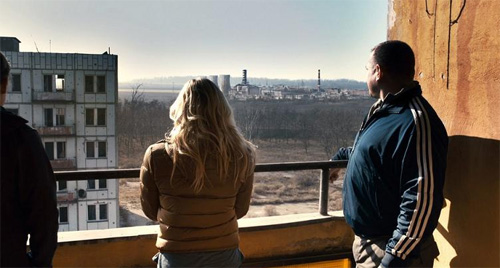
Watching Chernobyl Diaries can be a difficult task, and not just because it’s not a great movie. The whole movie revolves around the notion that the radiation from the Chernobyl reactor disaster may or may not have created monstrous mutants that still live in the surrounding areas. That’s a key question in the movie, so talking about this without revealing how it all ends is not a spoiler. Regardless of whether the baddies actually are fallout mutants, the movie does a decent job of villainizing the victims of a real life disaster that happened only 26 years ago. It’s a cheap and nasty device that is more unsettling than the movie itself. In 2027, will Oren Peli make a movie about insane and murderous 9-11 survivors lurking in the sewers of New York? After seeing Chernobyl Diaries, I wouldn’t put it past him.
Chernobyl Diaries released on Blu-ray on October 16, 2012, and is in stores now.



